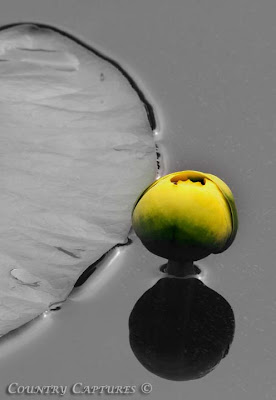
While fishing Saturday morning the refection & shadows among the lily pads caught my attention. While reviewing the resulting images I hit upon the idea of giving this one a selective color treatment.
I know, I know, it’s not really my style but I do like to play around with images occasionally.
As it is the end of the month, it was also time for a new header. This evening my wife and I again visited the Haines-Seville Wetland with a focus on insects. This butterfly, understanding my need of a September header image, posed beautifully for its portrait.
On another note, many of you have been following my son Chad’s engagement over at the photog blog. If you have been enjoying his post, pop over to Ash’s Eye to read all about my niece's exciting news.










































